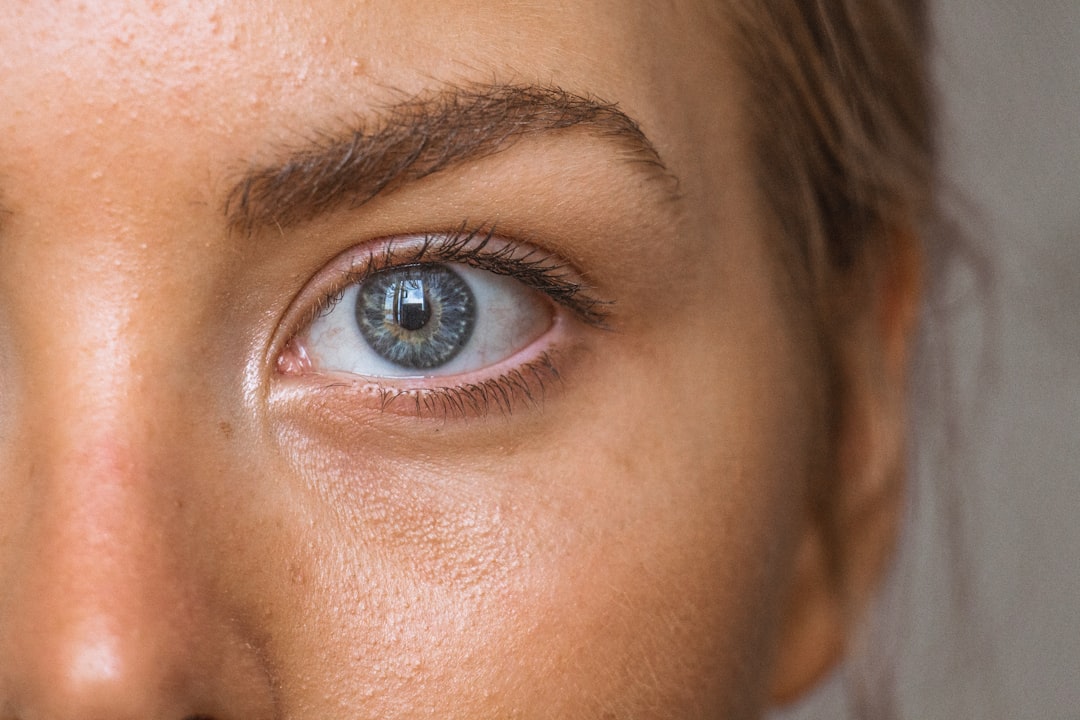Aftercare is a crucial aspect of any medical or cosmetic procedure, and its significance cannot be overstated. You may find that the steps you take post-procedure can significantly influence your recovery and the overall outcome. Whether you’ve undergone surgery, a cosmetic treatment, or any other medical intervention, the aftercare phase is where the healing truly begins.
It’s during this time that you can either enhance the results of your procedure or inadvertently hinder them through neglect or improper care. Understanding the importance of aftercare means recognizing that your body needs time and support to heal. This period is not just about avoiding complications; it’s also about nurturing your skin and body to achieve the best possible results.
By adhering to aftercare guidelines, you empower yourself to take control of your healing process, ensuring that you minimize risks and maximize the benefits of the treatment you’ve received. This proactive approach can lead to a smoother recovery and more satisfying results, making it essential to prioritize aftercare in your recovery plan.
Key Takeaways
- After care is crucial for proper healing and to minimize scarring after a skin procedure.
- Proper wound care includes keeping the area clean, dry, and protected to prevent infection.
- Sun protection is essential to prevent hyperpigmentation and scarring, especially in the first few months after a procedure.
- Avoiding irritants such as harsh soaps and chemicals can help prevent inflammation and discomfort.
- Monitoring for signs of infection, such as redness, swelling, or pus, is important for early intervention and treatment.
Proper Wound Care
Cleaning the Wound
Follow the specific instructions provided by your healthcare professional regarding wound cleaning, product usage, and dressing changes. Using sterile materials and gentle techniques will help prevent bacteria introduction and potential complications.
Monitoring for Abnormal Healing
Regularly monitor the wound for signs of abnormal healing, such as increased redness, swelling, or discharge, which could indicate an infection. Be vigilant and proactive in your recovery by reporting any concerning changes to your healthcare provider.
Proactive Recovery
Remember, proper wound care is not just about following instructions; it’s about being proactive in your recovery and ensuring your body has the best chance to heal effectively. Don’t hesitate to reach out to your healthcare provider for guidance if you notice any changes or have concerns.
Sun Protection
Sun protection is an often-overlooked aspect of aftercare that can have a profound impact on your skin’s healing process. After a procedure, your skin may be more sensitive and vulnerable to damage from UV rays. You should make it a priority to protect your skin from sun exposure during this critical time.
Wearing broad-spectrum sunscreen with a high SPF is essential, as it shields your skin from harmful rays that can lead to complications such as hyperpigmentation or scarring. In addition to sunscreen, consider wearing protective clothing and seeking shade whenever possible. A wide-brimmed hat and sunglasses can provide extra protection for your face and eyes.
You may also want to limit your time outdoors during peak sun hours, typically between 10 a.m. and 4 p.m. By taking these precautions, you not only safeguard your skin but also promote a healthier healing environment, allowing your body to recover without the added stress of sun damage.
Avoiding Irritants
| Category | Metrics |
|---|---|
| Avoiding Irritants |
|
Avoiding irritants is another critical component of aftercare that you should take seriously. Your skin may be particularly sensitive following a procedure, making it essential to steer clear of products or substances that could cause irritation or allergic reactions. This includes harsh soaps, fragrances, and certain skincare ingredients like retinoids or acids that may exacerbate sensitivity.
Instead, opt for gentle, hypoallergenic products that are specifically designed for sensitive skin. In addition to skincare products, be mindful of environmental irritants as well. This could include smoke, pollution, or even certain fabrics that may rub against your healing skin.
Creating a soothing environment can significantly aid in your recovery process. By being conscious of what you expose your skin to during this time, you can help ensure a smoother healing journey and reduce the risk of complications.
Monitoring for Infection
Monitoring for infection is an essential part of aftercare that requires your vigilance and attention. After any procedure, there is always a risk of infection, so being aware of the signs can help you catch any issues early on. You should regularly check the affected area for symptoms such as increased redness, warmth, swelling, or unusual discharge.
If you notice any of these signs, it’s crucial to contact your healthcare provider immediately for further evaluation. In addition to visual checks, pay attention to how you feel overall. If you experience fever, chills, or increased pain around the area, these could also be indicators of an infection.
Being proactive in monitoring for these symptoms not only helps protect your health but also allows for timely intervention if necessary. Remember that early detection is key in managing infections effectively, so don’t hesitate to seek help if something doesn’t feel right.
Managing Discomfort
Managing discomfort is an integral part of the aftercare process that can greatly affect your overall experience during recovery. Depending on the procedure you’ve undergone, you may experience varying levels of pain or discomfort. It’s important to follow any pain management guidelines provided by your healthcare professional.
This may include taking prescribed medications or over-the-counter pain relievers as directed. In addition to medication, consider incorporating other methods for managing discomfort. Techniques such as applying cold compresses can help reduce swelling and numb the area temporarily, providing relief from pain.
Engaging in relaxation techniques like deep breathing or meditation can also help alleviate stress and discomfort during this time. By taking a comprehensive approach to managing discomfort, you can enhance your recovery experience and focus on healing rather than pain.
Long-Term Skin Care
Long-term skin care is an often-neglected aspect of aftercare that deserves your attention even after the initial healing phase has passed. Once your skin has healed from the procedure, it’s essential to establish a consistent skincare routine that promotes health and vitality. This may include using moisturizers that hydrate and nourish your skin while incorporating antioxidants that protect against environmental damage.
Additionally, consider consulting with a dermatologist or skincare professional who can provide personalized recommendations based on your skin type and concerns. They may suggest treatments or products that can further enhance your skin’s appearance and health over time. By prioritizing long-term skin care, you not only maintain the results of your procedure but also invest in the overall health and resilience of your skin for years to come.
Follow-Up Appointments
Follow-up appointments are a vital part of the aftercare process that should not be overlooked. These visits allow your healthcare provider to assess your healing progress and address any concerns you may have.
Your healthcare provider can offer valuable insights into what to expect moving forward and may suggest additional treatments or adjustments to your aftercare routine if necessary. By actively participating in these appointments, you empower yourself with knowledge and support that can enhance your overall recovery experience.
In conclusion, aftercare is an essential component of any medical or cosmetic procedure that requires your attention and commitment. By understanding its importance and following proper guidelines for wound care, sun protection, avoiding irritants, monitoring for infection, managing discomfort, establishing long-term skincare routines, and attending follow-up appointments, you set yourself up for a successful recovery journey. Taking these steps not only enhances the results of your procedure but also promotes overall health and well-being in the long run.
After receiving laser hair removal treatment at a clinic, it is important to follow proper aftercare instructions to ensure the best results. One helpful resource for post-treatment care tips can be found on the In Laser Hair Removal website. This article provides detailed information on how to care for your skin after a laser treatment, including tips on moisturizing, avoiding sun exposure, and managing any potential side effects. By following these guidelines, you can help maintain the smooth, hair-free results of your laser treatment for longer.
FAQs
What is laser clinic after care?
Laser clinic after care refers to the post-treatment care and maintenance required after undergoing laser treatments at a clinic. This may include following specific instructions provided by the clinic to ensure proper healing and optimal results.
What are some common after care instructions for laser treatments?
Common after care instructions for laser treatments may include avoiding sun exposure, using recommended skincare products, keeping the treated area clean and moisturized, and avoiding certain activities or products that may irritate the skin.
Why is after care important after laser treatments?
After care is important after laser treatments to promote proper healing, reduce the risk of complications, and achieve the best possible results. Following after care instructions can also help minimize the risk of adverse reactions and ensure the longevity of the treatment’s effects.
How long does after care typically last after laser treatments?
The duration of after care after laser treatments can vary depending on the type of treatment and individual healing process. It is important to follow the specific after care instructions provided by the clinic, which may range from a few days to several weeks.
What are some potential side effects of laser treatments and how can after care help?
Potential side effects of laser treatments may include redness, swelling, and temporary discomfort. Proper after care can help minimize these side effects and promote faster healing. It can also help reduce the risk of complications such as infection or hyperpigmentation.








